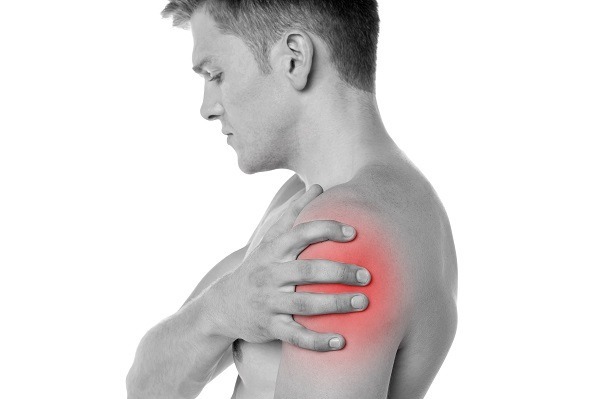Va Rating For Shoulder Surgery
rating shoulder surgery wallpaperOnce it ends the 100 percent rating will continue for a period of 3 months unless otherwise specified. The VASRD offers ratings for the following musculoskeletal conditions of the Shoulder and Upper Arm.

Va Disability Rating For Rotator Cuff Repair Hill Ponton P A
VA Disability Rating for Shoulder Bursitis.

Va rating for shoulder surgery. Injuries to the Humerus Bone. There are two types of temporary total ratings following surgery. 40 dominant and 30 non-dominant.
For VA compensation purposes normal forward flexion of the cervical spine is zero to 45 degrees extension is zero to 45 degrees left and right lateral flexion are zero to 45. The VA awards disability compensation for injuries to the Shoulder and Upper Arm Muscles that are service-connected. A rating under paragraph 30 is granted in 3 month or less increments up to a maximum of one year.
Therefore the VA should increase the Veterans disability rating based on the impact flare ups could have on a Veterans day-to-day life. You may be able to get an extension for up to 3 more months if your case is severe. The veteran is allowed a 3 to 12 month recuperative rating after surgerythat rating is always 100.
Arm and Shoulder Amputations In the most severe cases of injury you may have to have your whole arm amputated up to the shoulder. It follows that the condition is cured so he cant be rated for that any longer. Rating Major Minor 5051 Shoulder replacement prosthesis.
Extrinsic muscles of shoulder girdle. YES this IS a permanent prosthesis. Overview for Rating Shoulder and Upper Arm Muscle Conditions.
Rotator cuff surgery is rated based on the severity of the pain and the thickness of the rotator cuff tear. 20 for both shoulders. The minimum permanent rating for a shoulder replacement is 30 percent for a dominant arm and 20 percent for a non-dominant arm but you could get a rating as high as 50 or 60 percent depending on your condition.
Specifically veterans will be assigned a 100 percent rating until intensive treatment is over. That is a temporary assignment. A temporary total rating under 38 CFR Paragraph 30 and a total rating mandated by a specific diagnostic code.
The VA will rate rotator cuff surgery based on the severity of the pain and the thickness rotator cuff tears often around 10 20. Clear impairments to daily living and health diagnosed by a doctor or 3 or more incapacitating episodes a year. A 30 VA Rating for GERD is warranted when there is persistently recurrent epigastric distress with dysphagia pyrosis and regurgitation accompanied by substernal or arm or shoulder pain productive of considerable impairment of health.
Maximum movement to shoulder level. 30 dominant and 20 non-dominant. 3 serratus magnus Severe.
For Reservists the injury must have occurred in the Line of Duty to qualify. No CP is required just the notation that you had the surgery and the expected recovery time. The disability rating assigned also depends on whether the veterans dominant higher evaluation versus nondominant lower evaluation shoulderarm is affected.
Depending on how well your surgery goes it may eliminate the need for ANY compensation. Most often VA rates this condition as 10 or 20 percent disabling. Elevation of arm above shoulder level.
Veterans who undergo shoulder surgery may be eligible for a temporary total rating based on convalescence. 0 5302 Group II. Recovery time from either a surgery or the immobilization of a joint by a cast without surgery requires a temporary 100 disability rating for a service-connected disability.
The temporary 100 rating may continue for 1 to 3 monthsdepending on your unique case. 25 maximum movement from the side. If you believe you were given a low VA disability rating for flare-ups because your VA examiner did not take them into account when performing your CP exam you have the right to appeal.
The shoulder bursitis VA code is 38 CFR 471a 5201. Maximum movement midway between side and shoulder level. Rating Dominant Nondominant 5301 Group I.
If the surgery improves that range or eliminates the painful motion fatigue etc it wont help you get any higher ratings. Talk to Us About Your. You should out in for an increased SC rating based on the partial shoulder replacement surgery.
The DoD will also rate service-connected muscle injuries as long as they also make the service member Unfit for Duty. Loss of UseAmputation of the Shoulder. Then put in for temp 100.
In some cases though such as the case of a right shoulder impingement syndrome it may rate higher. Thus after the recuperative period he is then rated for any debilitating effects of the treatment or the disease. One or two painful flare-ups a year.
Prosthetic replacement of the shoulder joint. So if you cannot use the shoulder at all sounds like you should get the maximum rating. For 1 year following implantation of prosthesis.
Upward rotation of scapula. In general your shoulder would be rated based on Range of Motion ROM. ROM is the predominant rating criteria BUT under Deluca case functional impairment including pain against resistancewith weight loss of coordination lack of endurance MUST be considered.
Shoulder and Upper Arm Ratings. If your surgery prevents you from working. Heres what the shoulder JOINT is rated on.
Limitation of Motion of the Shoulder and Upper Arm. Worse than 40 but not quite 100 incapacitated with weight loss and anemia due to the long term affects and incapacitated 4 times a year or more.

